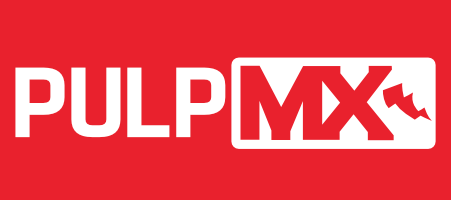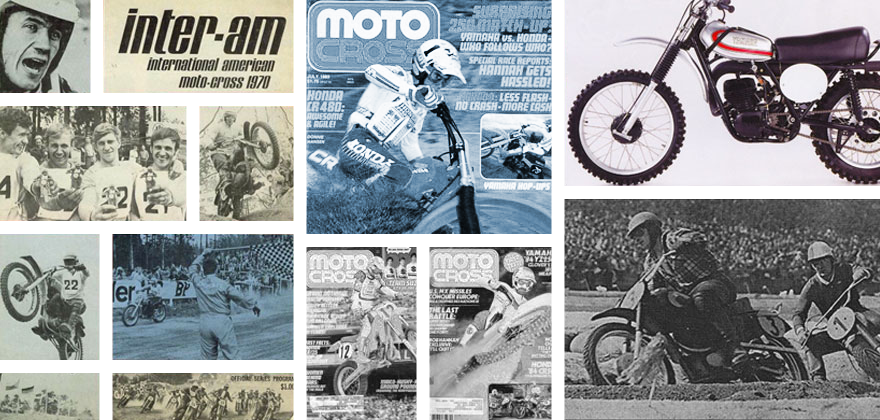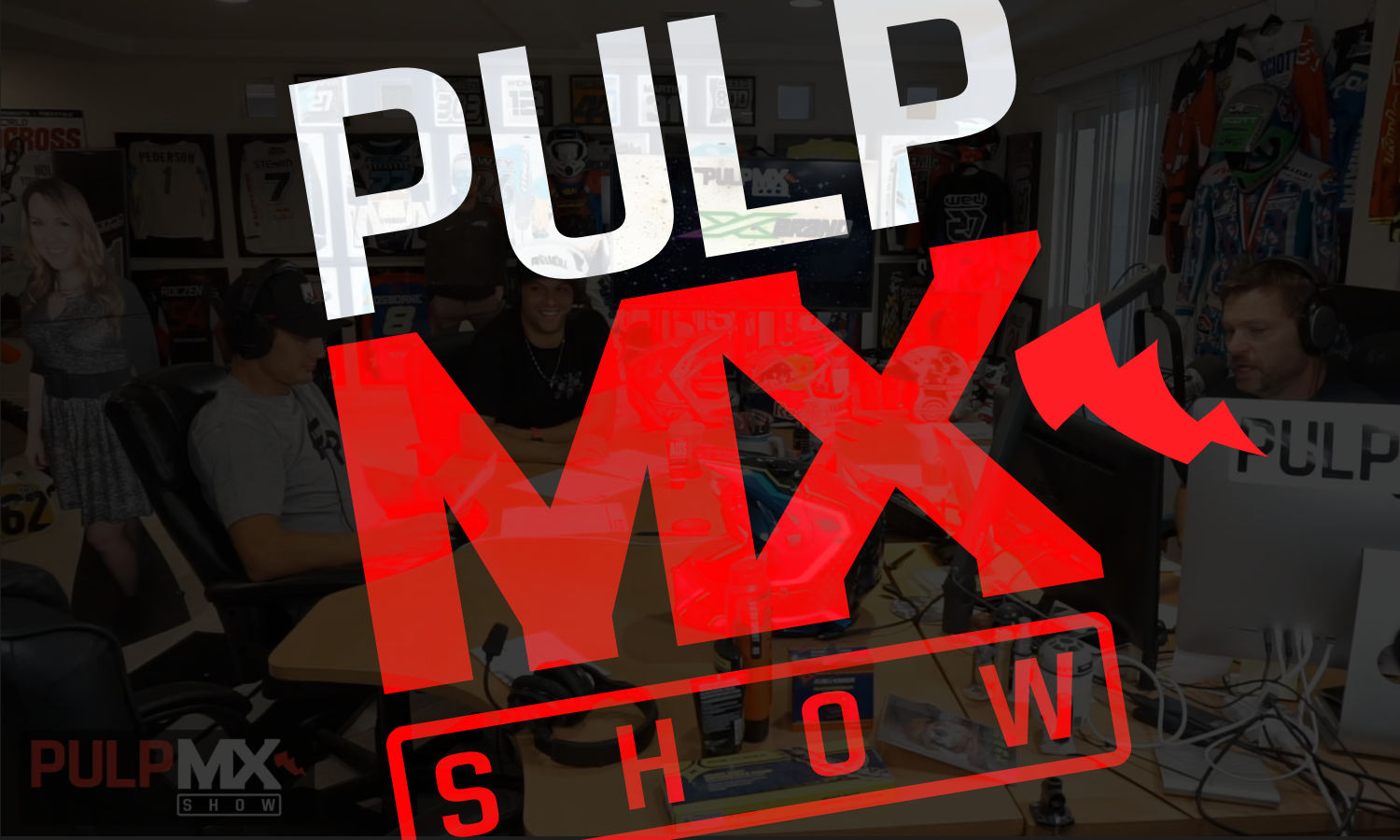
For this edition of Classic Ink, we are going to take a look back at the early days of Troy Lee Designs.
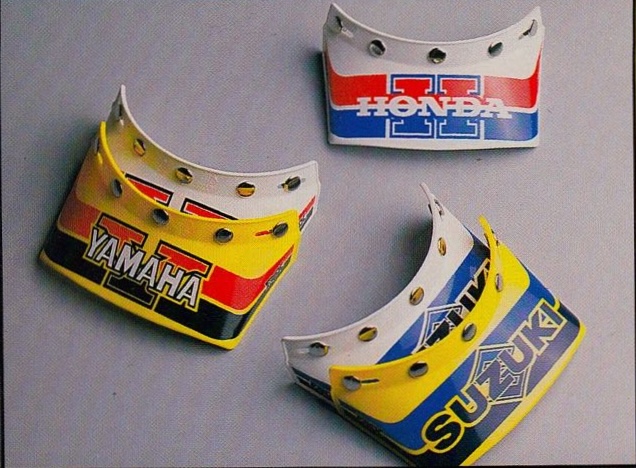 Helmet visors in the early days of motocross were far more about function than style. These snap-on visors from Fox Racing were considered pretty sano in 1984. Photo Credit: Fox Racing
Helmet visors in the early days of motocross were far more about function than style. These snap-on visors from Fox Racing were considered pretty sano in 1984. Photo Credit: Fox Racing
Today, Troy Lee Designs is one of the premier lifestyle and motocross apparel brands in the industry. Once an aspiring professional motocross racer, Troy Lee started his motocross empire as a helmet painter to friends and fellow pros during the heyday of So Cal’s early eighties MX scene. At the time, custom helmets were all but unheard of, and even highly paid factory riders could be seen with cobbled-together numbers and large strips of duct tape adorning their Bell and Electro helmets.
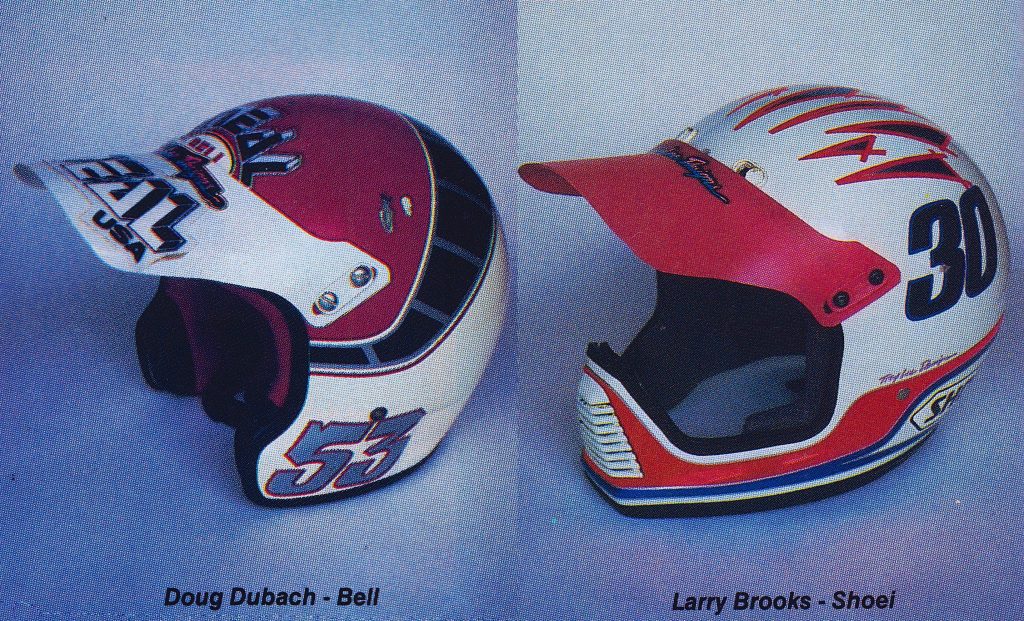 Troy Lee’s first-generation visor proved popular with local So Cal pros like Doug Dubach and MXA’s Larry Brooks. This exposure helped Troy expand his business and move his production out of his mom’s kitchen into a new facility in Corona, CA. Photo Credit: Motocross Action
Troy Lee’s first-generation visor proved popular with local So Cal pros like Doug Dubach and MXA’s Larry Brooks. This exposure helped Troy expand his business and move his production out of his mom’s kitchen into a new facility in Corona, CA. Photo Credit: Motocross Action
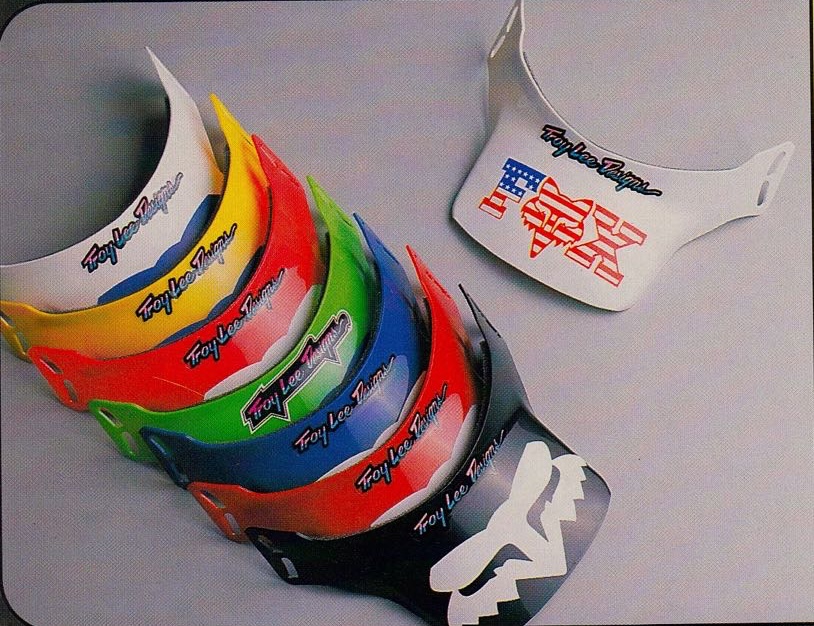 A partnership with Fox Racing put Troy’s new visors front and center in ads and their popular accessory catalogs. Having that Fox Flag visor on your Bell Moto-4 was the height of cool in 1986. Photo Credit: Fox Racing
A partnership with Fox Racing put Troy’s new visors front and center in ads and their popular accessory catalogs. Having that Fox Flag visor on your Bell Moto-4 was the height of cool in 1986. Photo Credit: Fox Racing
Troy’s artistic talent and eye for style were apparent, and he quickly realized that his fortunes would be better served by forgoing his racing ambitions in favor of chasing his helmet painting dreams. Using his mom’s kitchen as a production facility, Troy’s first breakthrough product was a sleek replacement for the bland and decidedly unexciting visors adorning most motocross helmets in the early eighties. The small snap-on visors found on most OEM helmets at the time provided minimal roost protection and even less style. Aftermarket replacements from JT Racing and DG offered improved roost coverage, but rarely improved looks.
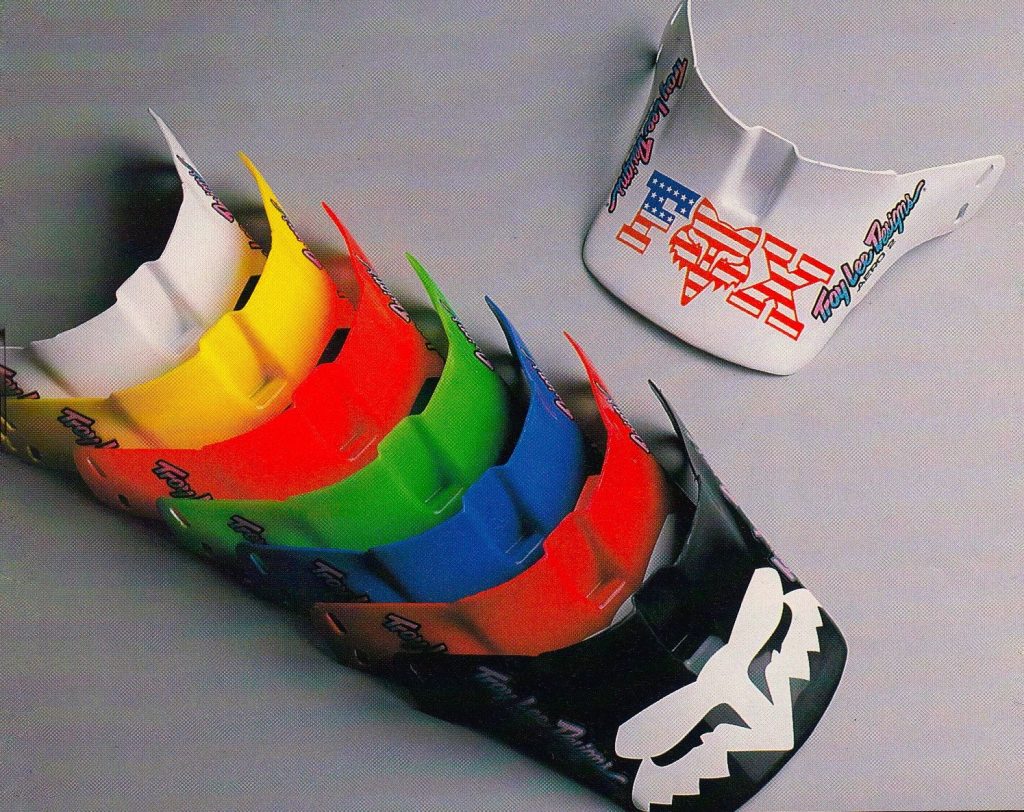 In 1986, Troy introduced the visor that would rocket his products to the top of the moto mindshare. The all-new Aero2 Visor was less of a Bell clone and far more stylish than the original TLD design. It looked great on virtually any helmet design and proved a nearly ubiquitous upgrade for any aspiring moto pro. Photo Credit: Fox Racing.
In 1986, Troy introduced the visor that would rocket his products to the top of the moto mindshare. The all-new Aero2 Visor was less of a Bell clone and far more stylish than the original TLD design. It looked great on virtually any helmet design and proved a nearly ubiquitous upgrade for any aspiring moto pro. Photo Credit: Fox Racing.
Troy’s new vacuum-formed plastic replacement visors were far more stylish than the typical duckbill replacements of the time and an inexpensive way to upgrade the looks and function of a bland OEM helmet. Troy’s visors found their way to the helmets of fellow So Cal pros like Doug Dubach and Larry Brooks and quickly took off in popularity. Eventually, high demand for the visors and the lingering smell of hot plastic necessitated a move out of his mom’s kitchen to a large hangar at Corona Municipal Airport.
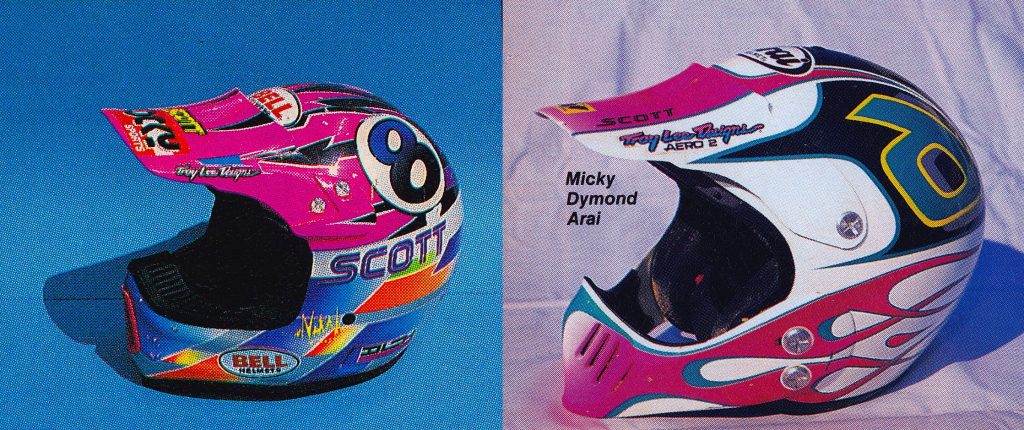 In the late eighties, TLD’s Aero2 visor could be found gracing the helmets of virtually every big-name pro rider in the pits. Photo Credit: Motocross Action
In the late eighties, TLD’s Aero2 visor could be found gracing the helmets of virtually every big-name pro rider in the pits. Photo Credit: Motocross Action
Troy expanded his helmet painting operations and quickly became known as the helmet painter to the stars. Partnerships with Fox and Shoei further increased his company’s profile with mega hits like Troy’s visor follow-up, the Aero2, becoming the “must-have” moto accessory of the late eighties. Within ten years, Troy Lee Designs grew from a small home-based side hustle into one of the most influential brands in the sport.
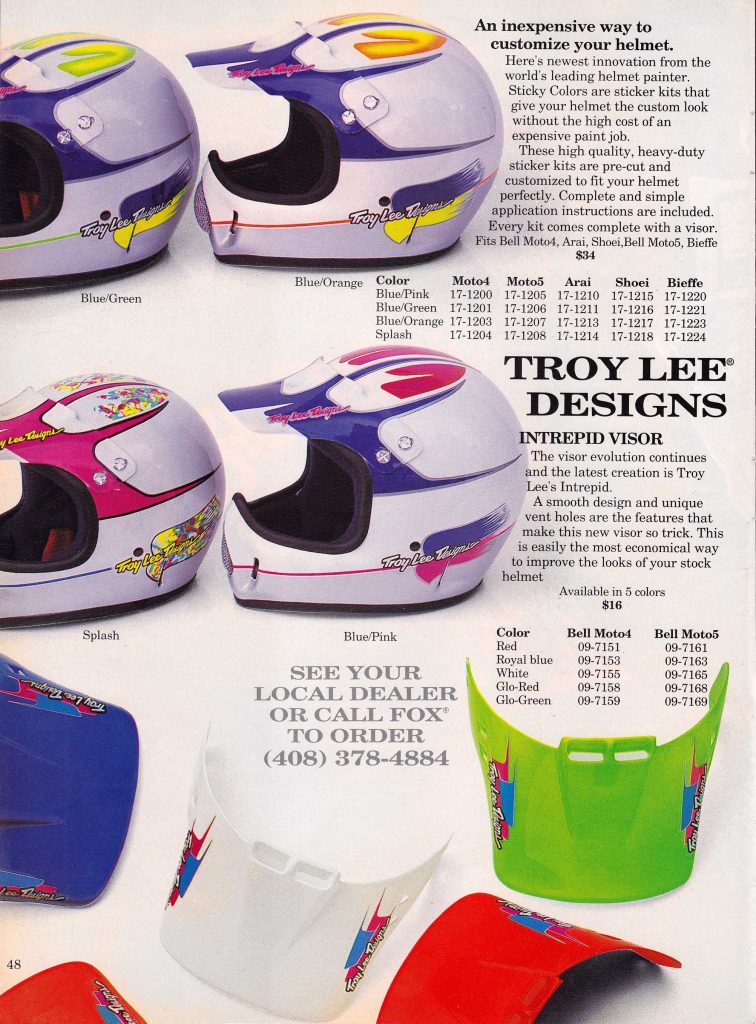 Troy Lee’s new Sticky Colors graphics and Intrepid Visor were extremely popular helmet upgrades in 1990.
Troy Lee’s new Sticky Colors graphics and Intrepid Visor were extremely popular helmet upgrades in 1990.
In the early 1990s, TLD would introduce the Intrepid visor as an update to the Aero2 and make a killing with a variety of inexpensive do-it-yourself graphic kits designed to allow cash-strapped racers to get that “custom” look. Nearly overnight, racetracks across America were awash in helmets adorned with TLD’s “Feathers”, “Bubbles”, and “Chopstix” graphics. Further hits like the helmet “fin” only increased Troy Lee Design’s standing as the taste maker of elite motocross fashion.
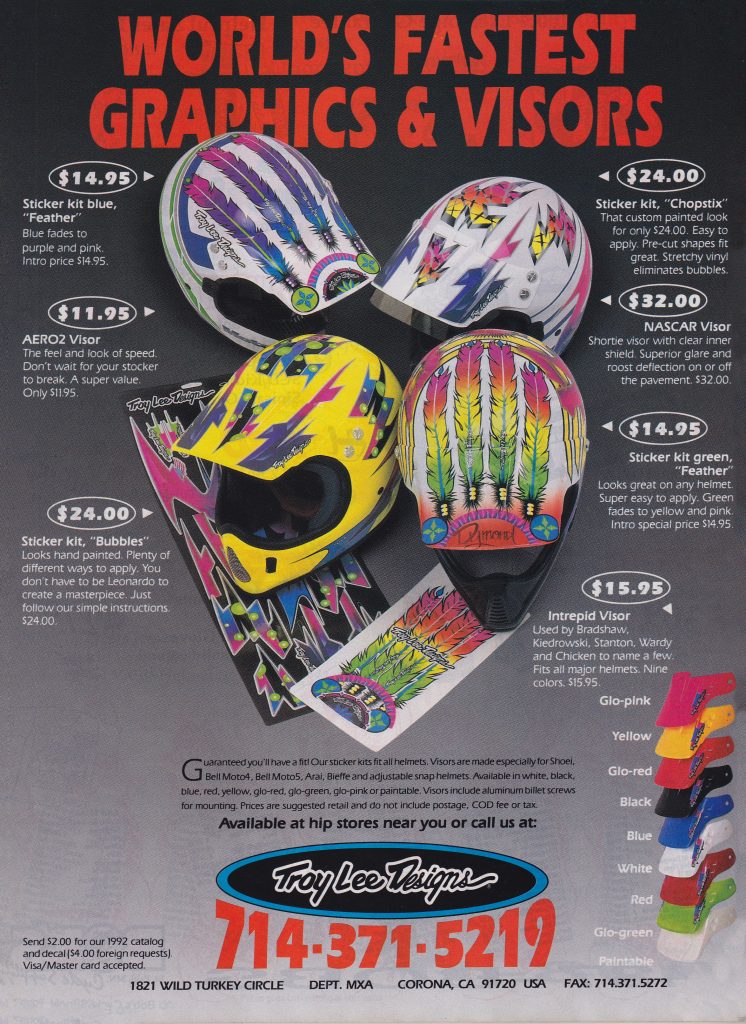 TLD’s second attempt at inexpensive helmet graphics proved even more successful than the first, with the new Feather, Bubbles, and Chopstix graphics kits flying off of dealers’ shelves.
TLD’s second attempt at inexpensive helmet graphics proved even more successful than the first, with the new Feather, Bubbles, and Chopstix graphics kits flying off of dealers’ shelves.
In 1995, TLD introduced the “Stingray” visor, but the market for aftermarket visors was cooling down from its heyday in the late eighties. Higher quality graphics and sleeker overall designs from the major helmet players meant that most new helmets no longer cried out for visor and graphical upgrades. Replica helmets from major players like Shoei provided riders with the option of looking just like Damon Bradshaw, Jeff Emig, or Doug Henry on the track. Riders with serious cash still ponied up for a fully custom design from Troy Lee and others, but the day of duct tape and duckbills was over.
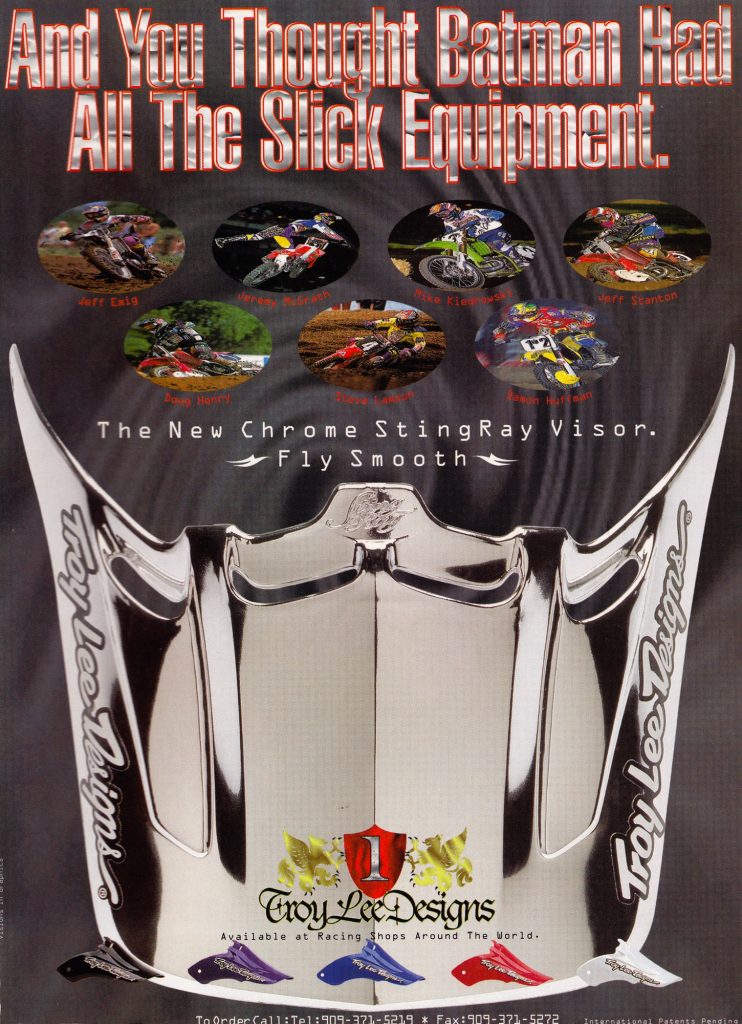 The new Stingray visor brought chrome into the mix in 1995.
The new Stingray visor brought chrome into the mix in 1995.
Seeing the writing on the wall, Troy made the bold move to expand his moto empire into apparel in 1998. The new “Speed Equipment Racegear” was quite conservative at first, with a minimalist design and limited color selections. Eventually, the bolder style TLD would become famous for would emerge, but it would take a few years for Troy and his designers to let their freak flags fly.
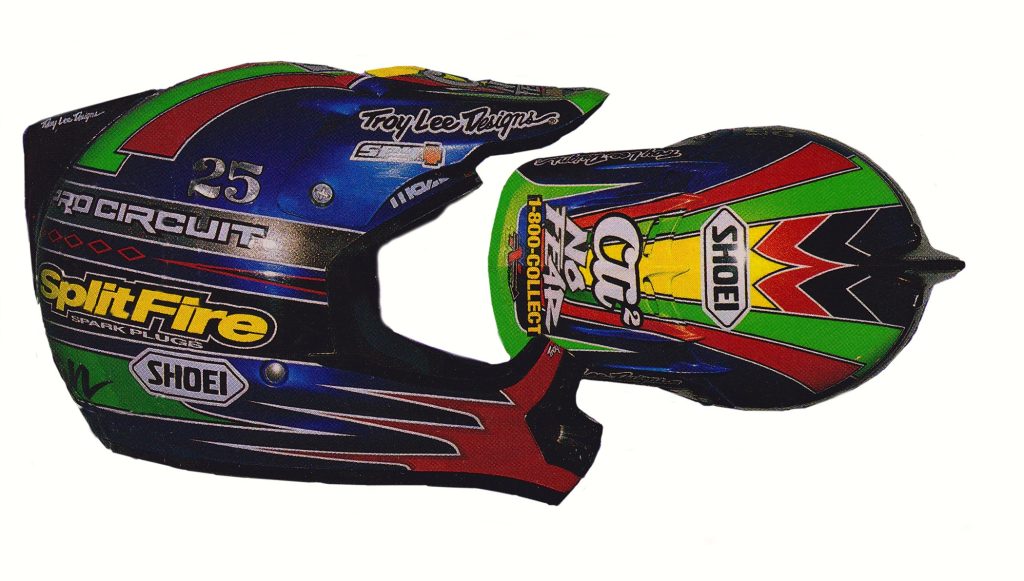 Troy Lee’s Helmet Fins became another trendy hit for the brand in the late 1990s.
Troy Lee’s Helmet Fins became another trendy hit for the brand in the late 1990s.
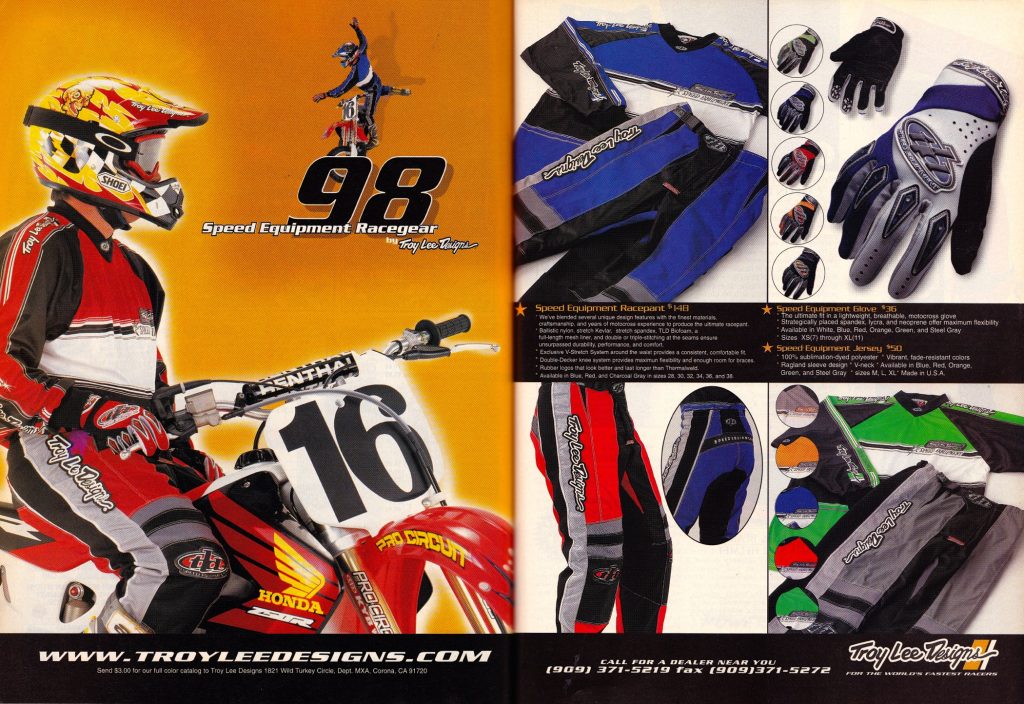 In 1998, Troy Lee Designs jumped into the apparel business with their new Speed Equipment Racegear. Conservative at first, TLD’s motocross gear would once again become a style trendsetter within a few years.
In 1998, Troy Lee Designs jumped into the apparel business with their new Speed Equipment Racegear. Conservative at first, TLD’s motocross gear would once again become a style trendsetter within a few years.
